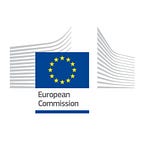How the EU is Mending Hearts and Limbs
Syrian Refugee Children Receive Critical Care in Jordan
There are over 650,000 registered Syrian refugees in Jordan. The vast majority live in poor urban areas and are often unable to access healthcare and other vital services. Expensive medical care involving surgery is particularly difficult to obtain for refugees. With the assistance of the European Commission, the humanitarian group LaChaîne de l'Espoir performs complex, often life-saving cardiac and orthopaedic surgeries on child refugees in Jordan. The patients are treated for congenital malformations, gunshot injuries, lesions following amputations and other medical problems.
Barrel bombs, mortars and cluster munitions had rained down on Syria’s largest city Aleppo for months when, in 2014, Walid and his family finally managed to flee. Heading for the safety of neighbouring Jordan, they moved from village to village — sometimes surviving without food and water for days on end. Nearly three months later, the family finally reached the Jordanian border.
Living rough in a makeshift shelter, their desperate situation was exacerbated by the fact that one of their daughters, six-year-old Jinan, was born with a congenital heart disease.
“Sometimes she would lose her breath and almost faint,” Walid said. “We never had the chance to see a doctor in Syria. We were constantly afraid that she might die.”
Walid eventually managed to bring his daughter to a hospital in Jordan where she was referred to doctors associated with La Chaîne de l’Espoir, an EU-supported humanitarian organisation specialising in providing medical and surgical treatment to refugee children.
Diagnosed with “tetralogy of Fallot”, a complex heart defect that occurs only in about five out of every 10,000 babies, Jinan was scheduled for immediate surgery. A few days later, Dr. Tammam Youssef, a heart surgeon with La Chaîne de l’Espoir, meticulously repaired the girl’s heart at a hospital in the Jordanian capital, Amman. During the surgery, a machine provided Jinan with blood and oxygen while a range of beeping devices monitored the girl’s vital signs.
Four hours later, Jinan was rolled into the recovery unit. Her skin, lips and fingers — previously a bluish tint because of the lowered oxygen level in her blood — was already changing into a healthy pink.
“She will make a full recovery,” Dr. Youssef says, as he relaxed with a cup of coffee in the hospital corridor. “It is very important that these children are treated, otherwise they run the risk of getting blood clots and other life-threatening complications. Poor oxygen supply also affects the development of the brain.”
At another Amman hospital, a separate group of surgeons treated children with orthopaedic problems, such as disjointed hips and club foot.
Ahmed, a refugee from the Syrian city of Daraa, sat in a waiting room with his two year-old son Nasser. After fleeing their home, the family ended up in Jordan’s Zaatari camp, the world’s largest Syrian refugee camp with over 80,000 people on some seven square kilometres of rocky desert. Soon after the family had settled into one of the camp’s prefabricated metal containers, Nasser was born.
“We didn’t know that there was something wrong with him,” Ahmed said. “It was only much later that a Syrian doctor in the camp told us that Nasser suffered from leg problems.”
La Chaîne de l’Espoir’s specialists diagnosed Nasser with developmental dysplasia of the hip, a congenital misalignment of the hip joint.
“After surgery he will have a good chance of a full recovery,” said Jerry Kieffer, a paediatric orthopedic surgeon from Luxembourg, who is part of La Chaîne de l’Espoir’s short-term mission to Jordan.
With most doctors in Syria either dead or having fled the country, a lot of preventable conditions remain undetected, Kieffer added. Once they arrive in Jordan, many refugees are unable to afford health checks or treatment.
“The older the child is, the harder hip problems are to treat,” he said. “When they reach a certain age, it’s already too late and the child will be forced to live with a disability.”
Matteo Paoltroni, technical advisor with European Humanitarian Aid Operations in Jordan, said that while most refugees live below the poverty line in camps or substandard flats, it is particularly dire for families with disabled children.
“The surgeries alleviate suffering and uphold the dignity of these children and their families,” he said. “And they are saving lives.”
Today marks the 6th year of the Syrian conflict. To date, EU aid funding (from the European Commission and Member States) amounts to €9.4 billion both inside Syria and to neighbouring countries which have shouldered the responsibility of hosting Syrian refugees. Funding is allocated to organisations such as La Chaîne de l’Espoir who work on the ground, helping Syrian refugees urgently in need of humanitarian assistance.
Learn more about EU humanitarian aid and how it helps Syrian refugees.
By Peter Biro, Regional Information Officer, EU Humanitarian Aid Operations
